The 7 Most Beautiful Historical Places in Quebec
A Quebec road trip primarily reminds us of the great outdoors, but are you familiar with the historical gems found in La Belle Province?
Here is my list of places to add to your itinerary when visiting us to learn more about the rich history of Quebec.
#7. The Historic Village of Val-Jalbert
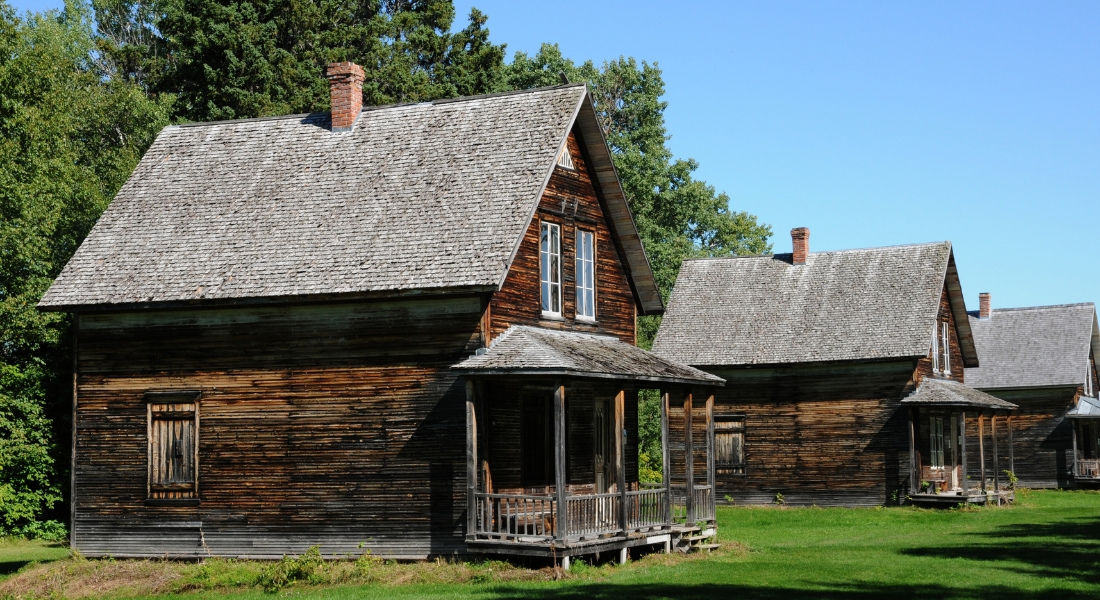
The Historic Village of Val-Jalbert is a true open-air museum located in the Saguenay-Lac-Saint-Jean region of Quebec. This restored ghost village offers a fascinating plunge into the industrial history of the early 20th century.
The story of Val-Jalbert begins with Damase Jalbert, a visionary businessman who identified the potential of the Ouiatchouan River to produce hydroelectric power. This energy was necessary to power a pulp mill, primarily intended to supply newspapers to the United States. In 1901, Jalbert founded the Ouiatchouan Pulp Company and with it, the village of Val-Jalbert to house the workers of the factory. At its peak, the community had about 950 residents. The village had modern infrastructure for the time, such as electricity in homes and a running water system, which was rare for industrial villages of that era. There was also a school and a convent, run by nuns, reflecting the importance placed on education and the well-being of the families living there.
However, the prosperity of Val-Jalbert was short-lived. In 1927, demand for pulp declined, leading to the closure of the factory, and in 1929, the village was completely evacuated. This once vibrant village became a ghost town almost overnight, and this remained for over 30 years. It was only from the 1960s that restoration efforts were undertaken to preserve this unique heritage and make it a tourist destination.
One of the most remarkable features of Val-Jalbert, apart from the village, is its impressive waterfall, 72 meters high, located on the Ouiatchouan River. Taller than Niagara Falls, it was crucial for the production of hydroelectric power that fueled the pulp mill. Today, the waterfall remains a must-see attraction for visitors, adding a spectacular touch to this historic village.
Since its reopening, Val-Jalbert has become much more than just a tourist site. This historic place offers an immersive experience, with guides in period costumes and live demonstrations that recreate the daily life of early 20th-century residents. One of the most innovative attractions is a multimedia show that uses 3D projections on the walls of the old factory. This modern approach allows telling the story of the village in a captivating and emotional way, bringing the remnants of the industry to life.
Unlike many other company towns that have been dismantled or destroyed, Val-Jalbert has been preserved as it was in 1927, allowing visitors to discover an intact heritage. They can even spend the night on site, either camping or in modern cabins, for a unique experience of staying in a restored ghost village.
#6. The Pointe-à-Callière Museum
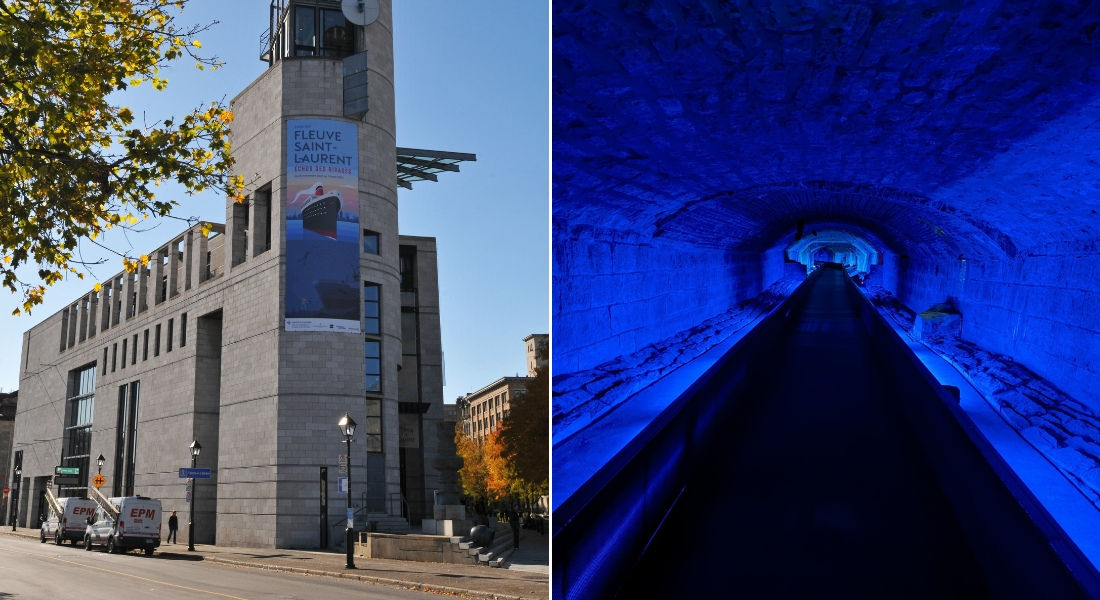
The Pointe-à-Callière Museum, located in Old Montreal, is one of the most important archaeology and history museums in Canada. Founded in 1992, it stands out for its unique location, built on the remains of the foundations of Montreal, where the city was founded by Paul de Chomedey in 1642. Pointe-à-Callière is not only a museum, but also a living archaeological site, telling the story of Montreal from its Indigenous origins to the present day.
The history of the museum begins in the 1980s, when construction work for a pumping station reveals the foundations of the old Fort Ville-Marie, as well as Indigenous remains dating back several centuries. The site is then protected, and the City of Montreal decides to create a museum that would showcase these extraordinary discoveries. In 1992, to coincide with the city's 350th anniversary celebrations, Pointe-à-Callière opens its doors. Since then, the museum has become an essential institution, hosting permanent and temporary exhibitions that explore the history and archaeology of Montreal, Quebec, and far beyond.
One of the most striking facts about this historic place is that it is built directly on authentic archaeological sites. Visitors can admire the ruins of the old collector sewer, one of the first of its kind in North America, built in 1832. This underground network of tunnels and canals has been carefully restored, offering a fascinating insight into 19th-century urban engineering. In addition to the collector sewer, one can explore the foundations of old buildings and artifacts that testify to the different periods of occupation of the site, notably traces of the old Ville-Marie cemetery and objects from the Indigenous period.
Pointe-à-Callière also features remnants of the Royal Insurance Building, constructed in 1861, with portions of stone walls integrated into the museum's modern architecture. This mix of ancient and contemporary structures creates a unique experience, allowing visitors to literally walk on the traces of the past while exploring a world-class museum. The museum, composed of several interconnected buildings, also houses immersive exhibitions. One of these flagship exhibitions is the multimedia "Generations MTL," which plunges visitors into 375 years of Montreal history, tracing the city's great developmental milestones through a spectacular projection, which I particularly recommend.
#5. The Plains of Abraham
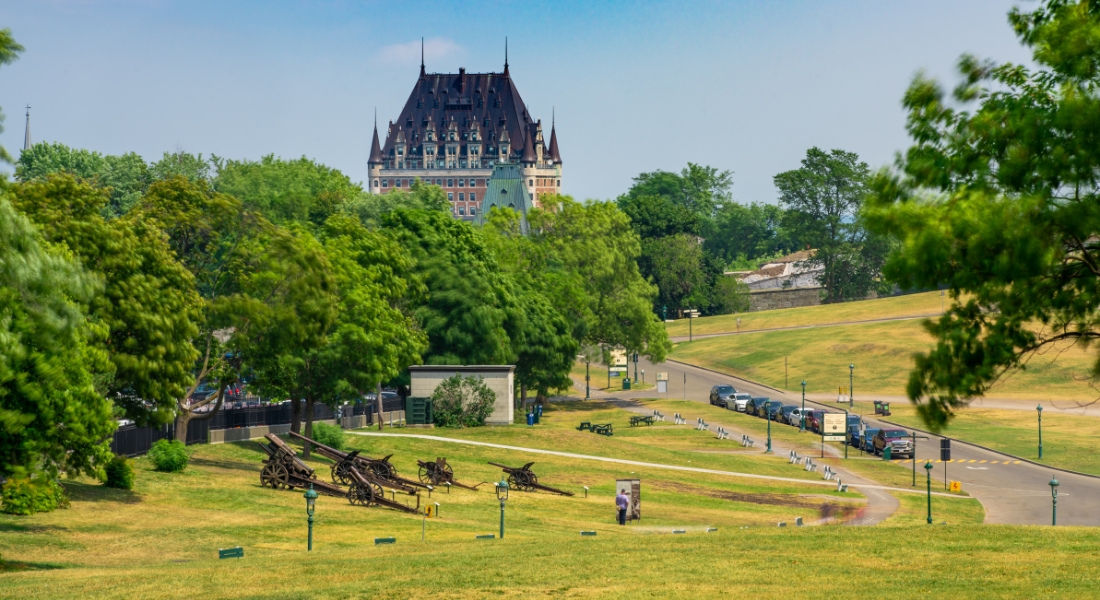
The Plains of Abraham, located in the heart of Quebec City, are an iconic historical site and one of the largest urban green spaces in Canada. Steeped in history, this park attracts thousands of visitors each year who come to discover the remnants of a decisive battlefield in the history of North America and enjoy its vast lawns and trails.
The history of the Plains of Abraham dates back to the time of New France. In 1759, this stretch of farmland, originally owned by a farmer named Abraham Martin, became the site of a crucial confrontation between French and British troops. On September 13th of that year, British forces, under the command of General James Wolfe, launched a surprise attack against the French troops of Louis-Joseph de Montcalm. The battle, though brief, marked a decisive turning point in the Seven Years' War. In less than 30 minutes, the French forces were defeated, and Quebec fell into British hands. This event sealed the fate of New France and paved the way for British dominance over Canada.
The Plains of Abraham are not only the site of a famous battle, but they also bear witness to the evolution of the city of Quebec over the centuries. After the battle, the site remained an agricultural area before becoming, in the 19th century, a place of walking and leisure for the city's residents. It wasn't until 1908, to celebrate the 300th anniversary of Quebec's founding, that the authorities officially transformed the site into a historic park. The park, now managed by the National Battlefields Commission, has become a place where one can relax while soaking in the history.
Over the years, the Plains of Abraham have been the setting for various unexpected activities, such as car races in the 1950s. At the time, a portion of the park served as a circuit for motor sport competitions. Nowadays, the Plains are mainly known for hosting major cultural and musical events, notably the Quebec City Summer Festival, which attracts internationally renowned artists and thousands of spectators.
This historic site also still houses military remnants. You can see the Martello Towers, round fortifications built by the British at the beginning of the 19th century to protect the city of Quebec against potential American invasions. Today, these towers are open to the public, offering a fascinating glimpse into the city's military past. Visitors can also explore one of the oldest military cemeteries in the country, which contains the graves of French and British soldiers who took part in the battles of 1759 and 1760.
In winter, the Plains of Abraham transform into a huge playground for winter sports enthusiasts. For decades, cross-country skiing, ice skating, and snowshoeing have been practiced there. The site has even hosted World Cup cross-country ski events, making the plains a gathering place for athletes from all backgrounds.
The park is also dotted with commemorative monuments, recalling the events that took place here. Among them, the monument to Wolfe and Montcalm pays tribute to the two generals who fell during the battle. This monument is unique, as it honors both the victor and the vanquished, symbolizing a posthumous reconciliation between two adversaries.
#4. Fort Chambly
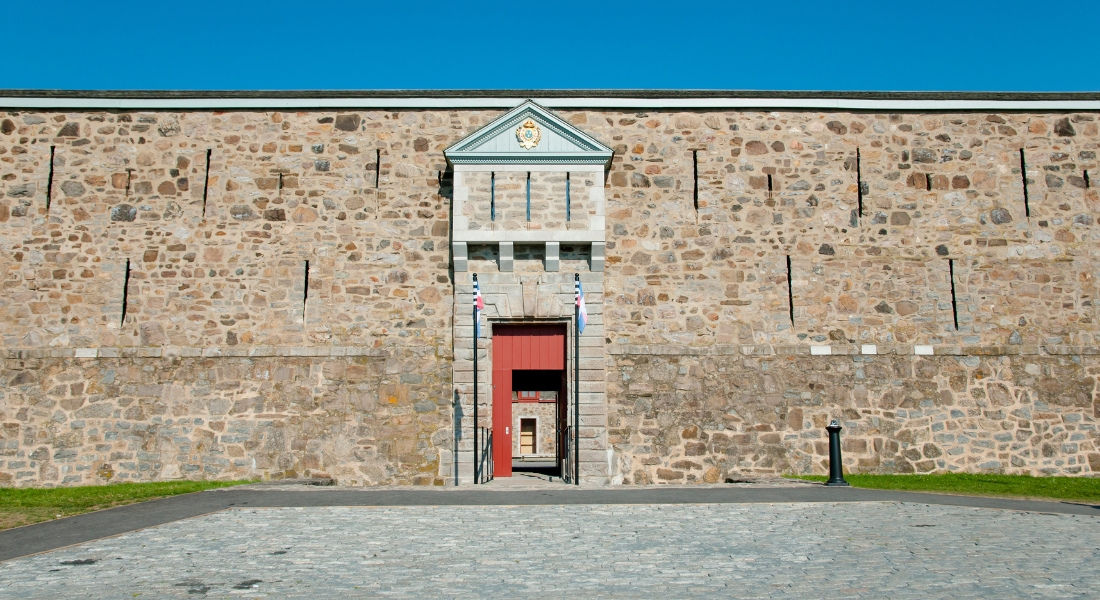
Fort Chambly, located on the banks of the Richelieu River in Chambly, Quebec, is a major historic site offering a fascinating insight into the colonial era and the conflicts that marked New France. Built in the 17th century, this stone fort played a crucial role in defending French territories against attacks from the Iroquois and the British.
King Louis XIV sent soldiers of the Carignan-Salières regiment to New France in 1665 to secure the colony against Iroquois incursions. An initial wooden defensive post was erected at this location by Captain Jacques de Chambly, after whom the fort is named. However, this wooden fort proved vulnerable to attacks and the wear and tear of time. In 1709, the governor-general of New France ordered the construction of a new stone fort to better protect the settlers and ensure control of the fur trade along the Richelieu River, a strategic route leading to Lake Champlain and New York.
The stone fort as it stands today was completed in 1711 and is an imposing square structure with bastions at each corner, thick walls, and loopholes to effectively defend against attacks. During the Seven Years' War, Fort Chambly became an essential link in the defense network of New France against the British. In 1760, as British forces advanced toward Montreal, the fort was finally captured without major resistance. Subsequently, it fell into the hands of the Americans during the American Revolutionary War and was used by various military groups before being abandoned.
An intriguing fact about Fort Chambly is that, despite its military significance, it was abandoned several times and fell into ruins by the 19th century. It wasn't until the 20th century that restoration efforts began. In 1921, the Canadian government took steps to preserve the site and designated it a national historic site. Since then, the fort has been restored and transformed into a museum, offering exhibitions on the military life of the time, conflicts between settlers and First Nations, and the fur trade.
Today, Fort Chambly is surrounded by a beautiful park that welcomes thousands of visitors each year. The site offers various activities, including historical re-enactments, where enthusiasts don the uniforms of the Carignan-Salières regiment's soldiers and recreate scenes of daily military life. The fort also offers traditional craft workshops, allowing visitors to discover the trades of the era, such as blacksmithing and candle-making.
#3. Place d'Armes
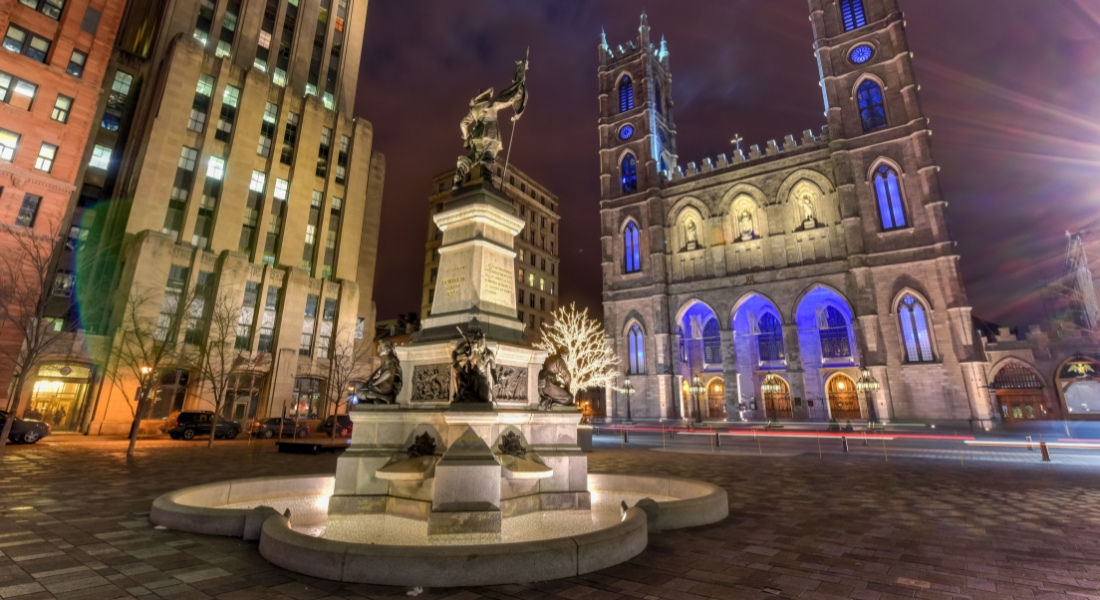
Place d'Armes, located in the heart of Old Montreal, is a landmark that testifies to the historical and architectural evolution of the city. Surrounded by notable buildings such as Notre-Dame Basilica, the headquarters of the Bank of Montreal, and the New York Life building, this square is both a gathering center and a living reminder of Montreal's rich past.
The history of Place d'Armes dates back to 1693, when it was laid out as a military exercise area for the French garrison. At the time, the square served as a training center for soldiers and a gathering place in case of attack. After the British Conquest in 1760, the site retained its strategic importance, becoming a training ground for British troops. However, as the city developed, the square lost its military role to become a place of commerce and social gatherings.
The 19th century marked a turning point for Place d'Armes as Montreal underwent a period of economic prosperity. In 1847, the construction of the first Bank of Montreal, still one of the most imposing buildings on the square, transformed the area into a financial center. Around the square, new buildings rose, such as the New York Life building, the first skyscraper in Montreal built in 1888. With its eight stories, it's considered an architectural masterpiece, symbolizing the city's growth and its increasing connection with the United States.
Also found here is one of the city's most iconic buildings, Notre-Dame Basilica, whose construction in 1824 radically changed the square's aspect and made it a major religious and cultural hub. The neo-gothic architecture of the basilica, with its two imposing towers, attracts thousands of visitors each year. The interior of the building is equally impressive, with a starry ceiling, colorful stained glass, and a majestic organ, making the basilica one of Montreal's architectural treasures.
It houses a controversial statue of the monument to Paul de Chomedey, the founder of Montreal, which has stood at the center of the square since 1895. The monument, designed by sculptor Louis-Philippe Hébert, features Maisonneuve holding a flag, surrounded by figures representing the First Nations, settlers, and religious figures who marked the city's history. The statue has sparked debates over the years due to its portrayal of indigenous peoples, often perceived as stereotypical. However, the monument remains a symbol of Montreal's foundation and attracts tourists for photo sessions and guided tours. You will also find other quirkier statues on the square, representing the great rivalry between French speakers and English speakers. I'll let you discover them! ????
#2. The Basilica of Sainte-Anne-de-Beaupré
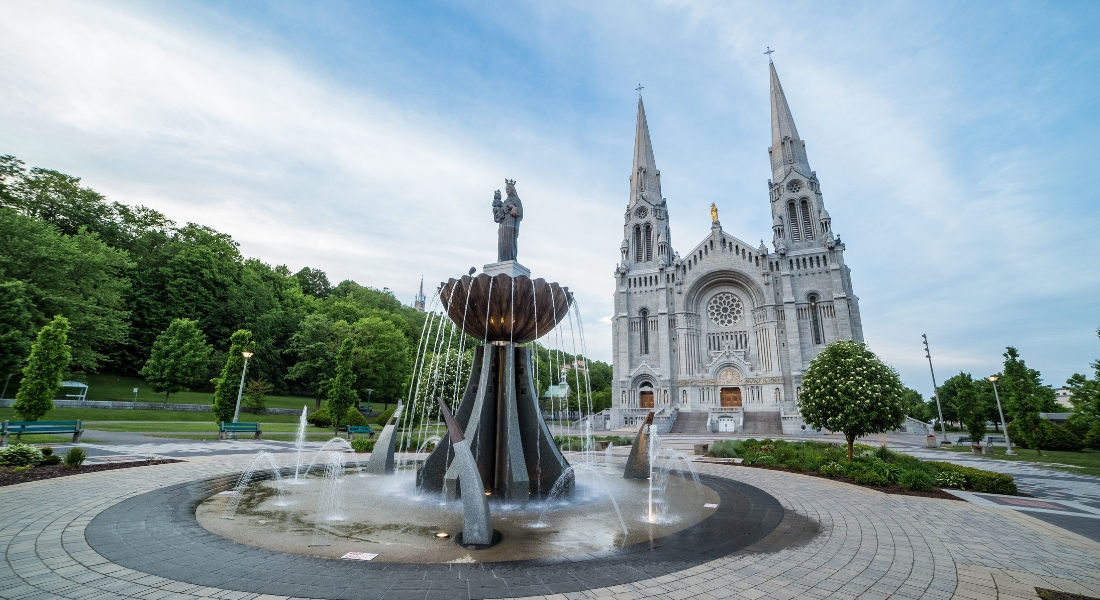
The Basilica of Sainte-Anne-de-Beaupré, located about thirty kilometers northeast of the city of Quebec, is one of the main pilgrimage sites in North America. This church, dedicated to Saint Anne, the grandmother of Jesus, attracts hundreds of thousands of visitors and pilgrims each year who come seeking comfort, healing, and spiritual inspiration. With its imposing architecture and rich history, the basilica is much more than just a religious building; it is a place of living faith, witness to several centuries of devotion and miracles.
The history of Sainte-Anne-de-Beaupré dates back to 1658, when the first French settlers in the Côte-de-Beaupré region decided to build a small wooden chapel to honor Saint Anne. Quickly, the chapel attracted pilgrims, as healing miracles began to be associated with the site. Tradition tells that one of the first miracles involved a worker suffering from a serious illness who, after helping in the construction of the chapel, was healed. From then on, the site became a popular pilgrimage destination for the inhabitants of New France.
Over the years, the wooden chapel was replaced by a larger stone church to accommodate the increasing number of pilgrims. In 1876, this church was elevated to the status of a minor basilica by Pope Pius IX, in recognition of its spiritual importance. However, in 1922, a fire completely destroyed the basilica. This tragic event did not put an end to the pilgrimages; on the contrary, it strengthened the determination of the faithful, and an even more majestic new basilica was inaugurated in 1926. The basilica that can be visited today is distinguished by its Neo-Romanesque architecture, with its two imposing spires, colorful mosaics, and magnificent stained glass windows.
A striking feature of the basilica is the presence of thousands of ex-votos, objects left as offerings by pilgrims in thanks for graces received. Among these ex-votos are crutches, orthoses, and even commemorative plaques of healing. These objects testify to the faith of visitors and remind us of the many miracles attributed to Saint Anne. According to tradition, several pilgrims were healed of serious illnesses or regained the use of their limbs after praying at the basilica.
In addition to its religious role, the Basilica of Sainte-Anne-de-Beaupré is also an architectural jewel. It holds one of the most beautiful collections of mosaics in North America, created by artisans from Italy. These mosaics illustrate scenes from the lives of Saint Anne, the Virgin Mary, and Jesus, and are masterpieces of sacred art that elicit admiration from visitors. Moreover, the sanctuary houses an impressive Casavant Frères organ, one of the largest and most beautiful in Quebec, whose sounds enrich the masses and concerts held in the basilica.
#1. Old Quebec
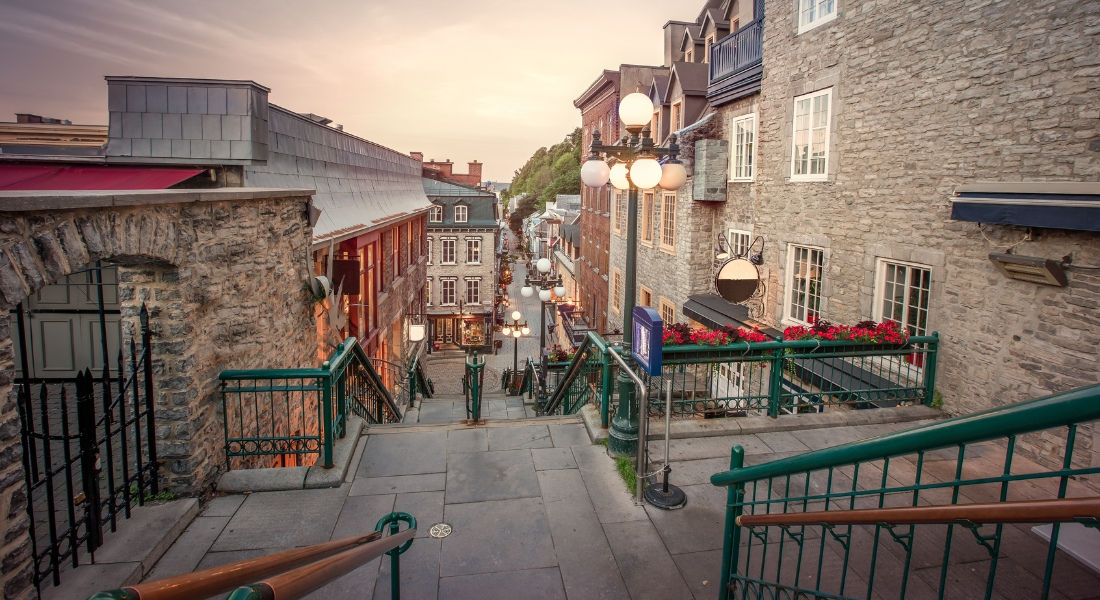
Old Quebec, with its cobbled streets, stone buildings, and imposing walls, is one of the most famous historical districts in North America and a true treasure of world heritage. Listed as a UNESCO World Heritage site since 1985, this district bears witness to the complex history of French and British colonization in America, while offering a charming and picturesque atmosphere that attracts millions of visitors each year.
The history of Old Quebec begins with the founding of the city by Samuel de Champlain in 1608. Built on the promontory of Cap Diamant, a strategic location overlooking the Saint Lawrence River, Quebec quickly became a nerve center for the fur trade and the development of New France. The city flourished under French rule, but it was also the scene of many conflicts, notably during the French and Indian Wars. In 1759, the famous Battle of the Plains of Abraham, which took place just outside the walls of Old Quebec, marked a decisive turning point. British forces, commanded by General James Wolfe, won the victory against the French troops of Louis-Joseph de Montcalm, leading to the fall of New France and the beginning of British domination.
The fortifications of Old Quebec are particularly remarkable. Indeed, it is the only city in North America to have retained its original walls, which stretch for about 4.6 kilometers and surround the Upper Town. Initially built by the French in the 17th century and reinforced by the British, these walls symbolize the military power and resilience of the city in the face of attacks. The Citadel of Quebec, an imposing star-shaped fortress that still serves today as a secondary residence for the Governor General of Canada and an active military base.
Old Quebec also houses the Château Frontenac, an iconic luxury hotel built in 1893 by the Canadian Pacific Railway company. This building, with its green copper roofs and elegant turrets, is often considered the most photographed building in the world. Although it is not a castle in the traditional sense, it embodies a neo-château style reminiscent of large medieval French estates and adds a touch of grandeur to the city's skyline. The Château Frontenac is also steeped in history: this is where Winston Churchill, Franklin D. Roosevelt, and William Lyon Mackenzie King met during World War II to discuss military strategies.
Buildings such as the City Hall, the Ursulines Monastery, and the Seminary of Quebec bear witness to the city's rich religious heritage. The bell towers of the numerous churches, the curved tin roofs, and the limestone facades recall the French style and create a unique atmosphere that distinguishes it from other North American cities.
In addition to its historical beauty, Old Quebec offers an exceptional culinary experience. The streets are filled with restaurants and cafes offering Quebec specialties such as tourtière, poutine, and pouding chômeur, allowing visitors to savor typical dishes while exploring the city. The French influence is also evident in the bakeries and patisseries, which offer a range of delights that delight sweet-toothed visitors.
With a city rich in historical past, there are also ghost stories and mysteries. Tales of spectres and unexplained events circulate around several old buildings, including the Auberge du Trésor and the old Quebec prison, giving rise to "ghost" guided tours that attract thrill-seekers.
There you go! Now you know where to stop for a dose of history during your Canada self-drive holiday.
Do you have other historical places to suggest? Let us know in the comments below!

































LEAVE A COMMENT
Répondre à: -
delete my replyYour e-mail address will not be shared